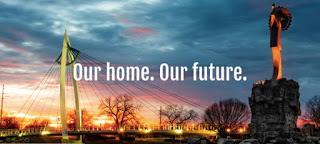 [Cross-posted to Front Porch Republic]
[Cross-posted to Front Porch Republic]2018 has been a busy year for those of us who aspire to--or are at least somewhat animated by--localism here in Wichita, KS, the 50th-most populated city in the United States. I have great affection for this place, but that affection is complicated by the problems we all seem to have in getting a handle on what it is, exactly, in or about our city that inspires, or deserves, said affection. Not for lack of trying! Like many small and mid-sized cities, the population of Wichita regularly tends to spend an inordinate amount of time and energy worrying about, focusing upon, and boosting in every way possible itself, and 2018, what saw a bumper crop of just that (and yes, I contributed as well.)
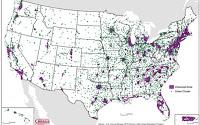 If you aren't part of the slightly less than 20% of the population of the United States that lives in a rural area, or part of the slightly more than 40% of the population of the United States that lives in one of the couple of dozen of giant metropolitan agglomerations in America--in other words, roughly speaking, if you live in one of the dots on this map, as opposed to in the white spaces or one of the big purple smears--then you very likely know exactly what I'm talking about. In a world where global capitalism has, as Marx predicted, mostly made everything solid melt into air, wealth and people and culture have too often been either sucked up by the great urban engines of the planet, or those things have freely chosen to make that move to those smears themselves, all of which makes it necessary for most smaller and medium-sized cities to scramble for resources...and, more importantly, to scramble for ideas about how to hold on to and make the most of the resources--the material, cultural, and human capital--which they still have. So it was probably inevitable (and, I think, mostly a good thing) that my city is inundated with surveys and studies and self-promotion--as silly as much of it, in retrospect, may turn out to be.
If you aren't part of the slightly less than 20% of the population of the United States that lives in a rural area, or part of the slightly more than 40% of the population of the United States that lives in one of the couple of dozen of giant metropolitan agglomerations in America--in other words, roughly speaking, if you live in one of the dots on this map, as opposed to in the white spaces or one of the big purple smears--then you very likely know exactly what I'm talking about. In a world where global capitalism has, as Marx predicted, mostly made everything solid melt into air, wealth and people and culture have too often been either sucked up by the great urban engines of the planet, or those things have freely chosen to make that move to those smears themselves, all of which makes it necessary for most smaller and medium-sized cities to scramble for resources...and, more importantly, to scramble for ideas about how to hold on to and make the most of the resources--the material, cultural, and human capital--which they still have. So it was probably inevitable (and, I think, mostly a good thing) that my city is inundated with surveys and studies and self-promotion--as silly as much of it, in retrospect, may turn out to be.Still, as I involve myself in, or stand back and observe, or sometimes just barely tolerate, all these well-intended efforts to analyze and energize my city, I'm haunted by something: small in comparison to major metros though Wichita may be, are we nonetheless too large to actually have any kind of coherent civic identity to build upon? Is there a definable locality here to love?
This concern--the "is there a there there?" question made famous by Gertrude Stein's sad reflection on her hometown of Oakland, CA more than 80 years ago--is hardly new. It has been expressed in various forms by localists and nationalists, centralizers and decentralists, for probably as long as the notion of popular sovereignty has existed. It was at the heart of the argument between Madison and the Anti-Federalists, with the former defending the value and coherence of an "extended republic," and with Brutus, to pick just one example, denying the republican legitimacy of a "large extended country." But let me push it into the sort of localist worries that, whether they realize it or not, are the lot of perhaps 130 million Americans. At least here in the mid-sized city of Wichita, most of those activists and analysts and boosters and critics I interact with--and, to be sure, mostly agree with!--in all these meetings and discussion groups see the relationship between size of a city and the civic identity of a city as presenting a problem only in one direction. We're too small, they all say! Look at how those big cities, the Dallases and Chicagoes and Oklahoma Cities, are drawing away all our businesses, our college graduates, our growing families! Sure, there's a great deal of truth to all that. But still the size presumed by those responses has everything to do with people and economics, whereas I am thinking about space. In other words, I would like to extended the question to the grass-roots, meaning the actual ground where the grass is rooted. Is one of the problems of Wichita and other similar cities simply spatial? Are they--are we--just too spread out? Is there just too much of us, acreage-wise?
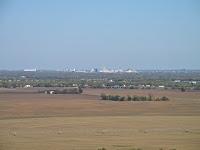 I've talked about some matters related to this a few times before, but mostly in the context of being able to identify and conserve a collective, citizen-enpowering civic identity in urban environments whose whole operating premise is, of course, usually entwined with individualistic demands for equality, opportunity, and change. Here I am thinking about spatiality in a much more structural sense. Cities like Wichita--and remember, there are hundreds of them, where millions of people live--are not part of dense networks of urban connectivity; rather, they are spread out, sitting on dozens or hundreds of square miles of land. Does that plain fact--the fact that Wichita is an automobile-dependent city, that it is a city which, as my oldest daughter (who now lives in Toronto, one of the great, dense urban agglomerations of North America) says, "you can't just walk to get anywhere"--itself something which gets in the way of getting a handle on the city, and talking about its future?
I've talked about some matters related to this a few times before, but mostly in the context of being able to identify and conserve a collective, citizen-enpowering civic identity in urban environments whose whole operating premise is, of course, usually entwined with individualistic demands for equality, opportunity, and change. Here I am thinking about spatiality in a much more structural sense. Cities like Wichita--and remember, there are hundreds of them, where millions of people live--are not part of dense networks of urban connectivity; rather, they are spread out, sitting on dozens or hundreds of square miles of land. Does that plain fact--the fact that Wichita is an automobile-dependent city, that it is a city which, as my oldest daughter (who now lives in Toronto, one of the great, dense urban agglomerations of North America) says, "you can't just walk to get anywhere"--itself something which gets in the way of getting a handle on the city, and talking about its future?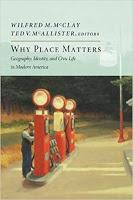 I recently finished an essay collection which is relevant to this question: Why Place Matters: Geography, Identity, and Civic Life. It's an uneven collection, as these sorts of books often are; the essays approach the topic of place from a wide range of philosophical, political, and practical perspectives, with more than few seeming rushed and underdeveloped, and some falling completely flat. But the best essays in the volume are those which dealt, in one way or another, with the often inchoate problem of space--how we occupy it, traverse it, build upon it, and identify with it. Unsurprisingly, the authors of those pieces were mostly architects, scholars of map-making and civic engagement, transportation engineers, or people who have studied all of the above closely. And they did not all agree with each other--in fact, the best parts of the collection illuminated a central tension that, I think, haunts localists in small and mid-sized cities across the country. Being spread out is costly, both in terms of fiscal sustainability and social anomie (which has all sorts of real-world health consequences). But at the same time, spreading out and staking out one's own sovereign space--thanks to interstate highways, cheap land, lax zoning laws, and most of all the automobile--is inextricably entwined with the mostly conservative and libertarian political cultures of the places where many of these communities have taken root. So, for those of us who are not localists on Wendell Berry's Port Royal farm or Jane Jacob's Greenwich Village apartment, the hard choice: must we learn to love the spatial reality we have--and thus respect, as Witold Rybczynski wrote, "the demand-side" of much contemporary automobile-centric American urbanism (p. 122)--or must we, in the name of our affection for our places, seek to make them more particular, limited, contained, and thus presumably more identifiable and lovable (all of which would require imposing, as Roger Scruton suggested, "side constraints" upon our community, so as to endow them with an "aesthetic identity"--p. 160)? I suspect that this dilemma permeates all the scrambling for answers and investments that go on in my city, and hundreds of others.
I recently finished an essay collection which is relevant to this question: Why Place Matters: Geography, Identity, and Civic Life. It's an uneven collection, as these sorts of books often are; the essays approach the topic of place from a wide range of philosophical, political, and practical perspectives, with more than few seeming rushed and underdeveloped, and some falling completely flat. But the best essays in the volume are those which dealt, in one way or another, with the often inchoate problem of space--how we occupy it, traverse it, build upon it, and identify with it. Unsurprisingly, the authors of those pieces were mostly architects, scholars of map-making and civic engagement, transportation engineers, or people who have studied all of the above closely. And they did not all agree with each other--in fact, the best parts of the collection illuminated a central tension that, I think, haunts localists in small and mid-sized cities across the country. Being spread out is costly, both in terms of fiscal sustainability and social anomie (which has all sorts of real-world health consequences). But at the same time, spreading out and staking out one's own sovereign space--thanks to interstate highways, cheap land, lax zoning laws, and most of all the automobile--is inextricably entwined with the mostly conservative and libertarian political cultures of the places where many of these communities have taken root. So, for those of us who are not localists on Wendell Berry's Port Royal farm or Jane Jacob's Greenwich Village apartment, the hard choice: must we learn to love the spatial reality we have--and thus respect, as Witold Rybczynski wrote, "the demand-side" of much contemporary automobile-centric American urbanism (p. 122)--or must we, in the name of our affection for our places, seek to make them more particular, limited, contained, and thus presumably more identifiable and lovable (all of which would require imposing, as Roger Scruton suggested, "side constraints" upon our community, so as to endow them with an "aesthetic identity"--p. 160)? I suspect that this dilemma permeates all the scrambling for answers and investments that go on in my city, and hundreds of others.It should be noted that this question about local affection for one's spaces, and the built environment on top of it, isn't confined to counter-culturally conservative and/or radical discussions of community; on the contrary, it's a background argument that has been present in the debates between various New Urbanist and Strong Town-types for decades. There are those who strongly suggest (as Philip Bess did in Why Place Matters--pp. 146-148) that environmental, economic, and even metaphysical circumstances will force people in places like Wichita to rethink how they have chosen, knowingly or otherwise, to live; they will recognize that there is simply no way to democratically govern, fiscally sustain, or morally appreciate an urban environment so willing to privilege individuality, privacy, and openness, and as a result a "great urban reset" towards traditional ideas about building will be inevitable, with liberal modernism being abandoned and in its place emerging "a finer grained set of master street grids for the places that can remain as towns and probably the aggregation of many other places back into viable farms, fields, and forests." And then there are those who, with varying degrees of gloominess, acceptance, and contentment, say that there is no evidence whatsoever that any such reset or rethinking or recognition on the horizon; they point out that, despite the huge urban tilt of America's overall population, less than 20% of all Americans have chosen to live in one of those relatively rare genuinely dense--and therefore walkable--cities, and that moreover there is every reason to believe that at least half of all the detached single-family-home-with-yard suburban structures currently filling up America's cities will still be occupied 40 years from now. As one of these great Jeremiahs, Keven Klinkenberg--himself a major fan of walkability and spatial limits!--unsentimentally observed: "we have a lot of suburbia in this country. We have far more than many planners and designers like to acknowledge or are aware of. Sometimes I think many of my colleagues haven't really been to America, and seen what it's like out there."
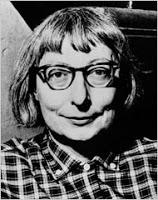 For spread-out, heavily suburbanized cities like Klinkenberg sees across the country, the radicals and reseters hold out little hope. Jane Jacobs herself spelled it out directly, nearly 60 years ago, in her discussion of urban density (one of her four central imperatives for any city of generate the necessary level of diverse social and economic activity) in the classic The Death and Life of Great American Cities: "[D]ensities high enough to bring with them innate city problems are not by any means necessarily high enough to do their share in producing city liveliness, safety, convenience and interest....[B]etween the point where semi-suburban character and function are lost, and the point at which lively diversity and public life can arise, lies a range of big-city densities that I shall call "in-between" densities. They are fit neither for suburban life nor city life. They are fit, generally, for nothing but trouble" (p. 210).
For spread-out, heavily suburbanized cities like Klinkenberg sees across the country, the radicals and reseters hold out little hope. Jane Jacobs herself spelled it out directly, nearly 60 years ago, in her discussion of urban density (one of her four central imperatives for any city of generate the necessary level of diverse social and economic activity) in the classic The Death and Life of Great American Cities: "[D]ensities high enough to bring with them innate city problems are not by any means necessarily high enough to do their share in producing city liveliness, safety, convenience and interest....[B]etween the point where semi-suburban character and function are lost, and the point at which lively diversity and public life can arise, lies a range of big-city densities that I shall call "in-between" densities. They are fit neither for suburban life nor city life. They are fit, generally, for nothing but trouble" (p. 210).That's a harsh message for localists like me, and millions of other who live in places like mine, to hear. Of course, there are no definitive percentages regarding people-per-block or dwellings-per-acre attached to the arguments here--but nonetheless, I can recognize by own community in her words. Wichita, like so many other mid-sized cities, is a mostly conservative, mostly car-centric place, with struggles against the preferences of most of its own residences to pull people together around either civic centers or common causes. It definitely has urban problems, but its urban culture, which it cannot avoid having (it's not as though it could get a better handle on its own needs and possibilities by pretending, against all evidence, that it's actually just a rural county town), is a thin, oft-privatized one.
Pushing against that "in-between" reality can take radical (or radically traditionalist, as the case may be) forms. I'm an urban cyclist, serve on Wichita's Bicycle and Pedestrian Advisory Board, and want to see real transportation alternatives develop to get people out of their cars; I've long pushed for sustainability and local food systems that could take advantage of the Wichita's environmental resources and lessen its many dependencies; and I've railed against the sort of (mostly) corporate-driven construction that is too often a fake kind of growth, does nothing to encourage density, and which only disrupts the many low-profile commons areas our city has. As I've written before, I am basically Vogtian in my heart, meaning that I resonate most with William Vogt's call for us to cut back and figure out ways to condense and compact our presence on the earth. And yet for all that...I'm not willing to abandon the strategy of amelioration. I want to work with what and who is actually here, not some Bretchian alternative. This place, for all its problems, for all its arguable lack of a center--both material and cultural--that those trying to get the city to move in one way or another can hold onto, is nonetheless a very good place. I like the way its schools have educated our children, I like riding on its roads, I like its weird corners of deep and radical thought. So I go to the meetings, and where I can try to articulate a way to make Wichita's mid-sized in-betweenness work.
In the final--and very good--essay in Why Place Matters, Wilfred McClay makes use of Lewis Mumford, Alexis de Tocqueville, and Johann Wolfgang von Goethe to emphasize that being part of those arguments, that engaging with these concerns and problems, however in vain it may sometimes seem (especially for cities stuck in the middle), is deeply connected to democratically realizing the whole point of, and thus making a home in, the community which occupies the space where each of us live:
A key factor in this openness [in urban planning] is the recognition that the making of a place must have a participatory dimension if it is to be genuine and enduring. Place is not something that can be manufactured by others or handed over intact from generation to generation. On the contrary, each generation faces the task anew. One things of Goethe's famous adage, placed in the mouth of Faust: "Was du ererbt von deinen Vätern hast, Erwirb es, um es zu besitzen" ("What you have inherited from your fathers, you must earn or appropriate for yourself, and only then will it be yours"). It is made ours in the very way that John Locke described the act of taking possession of land or some other thing in his Second Treatise: a thing becomes our property, fully possessed by us, when that thing has been "mixed with our labor," with the wealth of experiences we have had in our "land of living," and the efforts we have expended on it and for it (p. 256).
Wichita has, like so many other cities looking down threatening fiscal and environmental barrels at this moment, a great many unresolved problems. Unfortunately, the trajectory of the global economy is such that there is little reason to believe that communities like mine will have any greater success in the years to come in holding onto or increasing the sort of resources which might allow them to easily articulate a collective vision and thereby pursue the kind of radical solutions which we almost certainly need. So where does that leave millions of us, stuck as we are between the rural town, with its small ecological footprint and its inherited homogeneous identity, and the global city, with its globally-fed concentrations of people, ideas, and wealth? We will be left, in all likelihood, with patchwork solutions, as we slowly attempt to get a hold of this sprawled-out, slow-growth space, and make it, or keep it, an enduring place of our own. The pressure against such openness will remain acute, I think; always, the demand will be for localities like mine to reject every immigrant or input, or go mad with debt so as to attract every investment and opportunity, solely to be able to say to ourselves that we are no longer stuck in the middle, and are finally on our way, retreating back or advancing forward into being one or the other. For my part, though, I'll keep going to meetings, and keep muddling, talking about in-fill development, talking about farmers markets, talking about all those micro-changes, into 2019 and beyond. Maybe, in a certain sense, that's the most radical approach of all.
